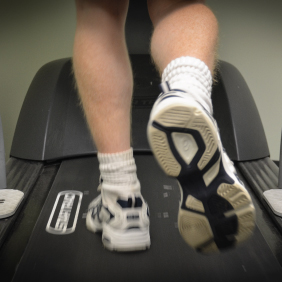Contributor: Paul Pound LPC, LCADC, ACS
 An addiction has been described as “an unusually great interest in something or a need to do or have something (Meriam – Webster, 2015).” the observable differences between athletes and those individuals experiencing and addiction can be seen in the type of activity undertaken.
An addiction has been described as “an unusually great interest in something or a need to do or have something (Meriam – Webster, 2015).” the observable differences between athletes and those individuals experiencing and addiction can be seen in the type of activity undertaken.
Those experiencing an addiction engage in substance dependence and behavioral addictions while athletes participate in socially accepted sports at levels of training that absorb thousands of hours each year.
The Language of Athletes and Substance Abuse
The language used to describe an athlete is often committed, dedicated and determined while the individual experiencing addictive behavior is weak, sick and irresponsible. The athlete is usually socially accepted while the addictive behavior of the substance user is generally rejected.
Both have become absorbed in their activity and seek to gain a reputation amongst their peers. Athletes often rejoice in the admiration and respect for their achievements while individuals experiencing an addiction have a tendency to command an audience to recall their grand behavior often under the influence of addictive substances.
The persona projected by the addicted individual is often one of confidence yet the energy found to project such an image may result in the destruction of the important aspects of their life. The decay of reputation and prestige of the addicted individual or former athlete often results in a decline in many of the important areas of life.
The Similarities Between Former Athletes and Addiction
 Many have witnessed the deterioration of an individual absorbed by substance dependence, the loss of financial resources, broken relationships as well as poor physical and mental health. Yet few get to observe similar signs from those who are no longer useful professional athletes.
Many have witnessed the deterioration of an individual absorbed by substance dependence, the loss of financial resources, broken relationships as well as poor physical and mental health. Yet few get to observe similar signs from those who are no longer useful professional athletes.
The similarities between athletes and those experiencing process and substance use to cope with life’s challenges are striking. “Sports Illustrated estimated in 2009 that 78 percent of NFL players are bankrupt or facing serious financial stress within two years of ending their playing careers and that 60 percent of NBA players are broke within five years of retiring from the game (Wiles, 2012).”
Retired NFL players’ divorce rate has been reported 10 – 30% higher than the general population (Teitelbaum, 2005).
The Observable Signs of Decline
The observable signs of decline found between athletes and those with addictive behavior are also present in the psychological personas used to confront challenges. A persona can be described as a system within ourselves that we use to deal with situations that can be observed by those in our environment.
Each of us has two psychological personas’ that we employ to face the many challenges we confront in life. Relationships, business, life transitions, sports, hobbies and every aspect of our existence are challenged. How we react to the many challenges can determine the kind of life we believe we are experiencing.
The Confidence Builder and Anxiety Creator are two personas’ that influence and impact the majority of our decisions which shape our lives.
The Confidence Builder
 The Confidence Builder is the strength we find when we move forward and succeed in reaching a goal. Hope is replaced with a sense of knowing one can achieve one’s desire. This may involve stepping into the unknown yet the confidence builder provides that movement with a sense of composure and satisfaction.
The Confidence Builder is the strength we find when we move forward and succeed in reaching a goal. Hope is replaced with a sense of knowing one can achieve one’s desire. This may involve stepping into the unknown yet the confidence builder provides that movement with a sense of composure and satisfaction.
Confidence is a step beyond courage as it is without doubt. There is only knowledge in one’s ability to succeed at the desired goal. The use of the term Builder is to acknowledge that experiences are required to develop confidence.
The Anxiety Creator
The Anxiety Creator is found on the other side of confidence. It is a form of energy that inhibits us from moving forward in a calm manner. Challenges are seen as walls that prevent us from reaching our desired goals. Anxiety Creator personas see challenges with fear and use a variety of emotions to protect themselves.
This can range from deep sadness to defensive anger. A lack of knowledge about the challenge is fertile ground for ineffective action. The term Creator is used to highlight the differences between the experiences of Confidence Builder and the Anxiety Creator personas’. The Anxiety Creator will often cultivate their feeling of anxiety through inaction.
Common Tools
Common tools are the connection between an individual’s Confidence Builder and Anxiety Creator. The expression of these tools can be influenced by psychological needs (Glasser, 1998, Deci and Ryan, 2000.) and trained experiences found an individual’s life.
The common tools consist of avoidance, analysis, anticipation and action. The table below outlines the common tools with the divergent perspectives of the Confidence Builder and Anxiety Creator persona.
| Confidence Builder | Common Tool | Anxiety Creator |
|---|---|---|
| “not important enough” | Avoidance | “I hope it goes away” |
| “I can do this” | Analysis | “this is too much” |
| “This will happen when” | Anticipation | “what will happen if” |
| “Thoughtfully focused” | Action |
Reaching for Prestige
 The individual that reaches for prestige fueled by addictive behavior and substances has gained a distorted temporary strength from a perspective that resembles their Confidence Builder persona. This seductive momentary strength tempts the individual experiencing an addiction to reach for greater prestige and reputation.
The individual that reaches for prestige fueled by addictive behavior and substances has gained a distorted temporary strength from a perspective that resembles their Confidence Builder persona. This seductive momentary strength tempts the individual experiencing an addiction to reach for greater prestige and reputation.
Despite this temporary feeling of esteem, the true energy fueling the individual is derived from their Anxiety Creator. Athletes and those experiencing an addiction share common psychological states that can lead to a desire for prestige and reputation. They can use action or substances to suppress their Anxiety Creator persona to build a superficial confidence.
The ability to manage anxiety while experiencing small successes is the genuine energy that builds a life with realistic confidence.
Community Discussion – Share your thoughts here!
Of the two personas of Confidence Builder and Anxiety Creator, which do you see more prominent within yourself throughout your recovery from addiction? How has managing anxiety and experiencing small successes built confidence in your life?
The opinions and views of our guest contributors are shared to provide a broad perspective of addiction. These are not necessarily the views of Addiction Hope, but an effort to offer discussion of various issues by different concerned individuals.
Author Bio:
Paul Pound MS, MPhil, LPC, LCADC, ACS
Paul holds a Master’s degree in Mental Health Counseling from Capella University and a Master’s degree in Education with a focus in sport psychology from the University of Auckland, New Zealand. He completed a Doctorate degree in Applied Sports Psychology from Wexford University, California.
He is a NJ Licensed Clinical Alcohol and Drug Counselor, NJ Licensed Professional Counselor and Approved Clinical Supervisor. He is certified by the Association for Advanced Training in Behavioral Sciences as an Alcohol Abuse Specialist. Paul is a published author with articles about positive counseling methods, adolescent development, addictions counseling and sports counseling.
References:
- Addiction. 2015. In Merriam-Webster.com. Retrieved April 19, 2015, from http://www.merriam-webster.com/dictionary/addiction.
- Deci, E. L., & Ryan, R. M. (2000). The “what” and “why” of goal pursuits: Human needs and the self-determination of behavior. Psychological Inquiry, 11, 227-268.
- Glasser, W. (1998). Choice Theory: A New Psychology of Personal Freedom. New York: Harper Perennial.
- Teitalbaum, S. (2005) Sports Heroes, Fallen Idols Thompson – Shore.
- Wiles, R. (2012). Pro athletes often fumble the financial ball. Arizona Republic.
Last Updated & Reviewed By: Jacquelyn Ekern, MS, LPC on May 7th, 2015
Published on AddictionHope.com
